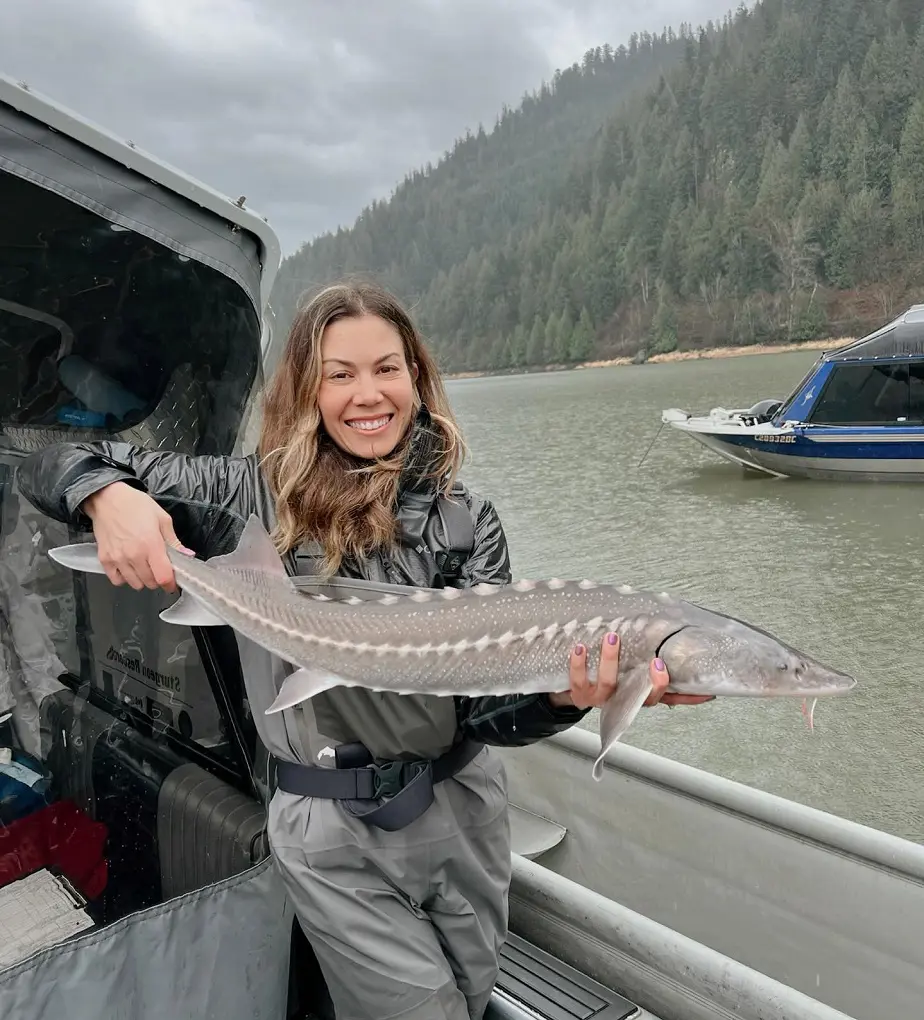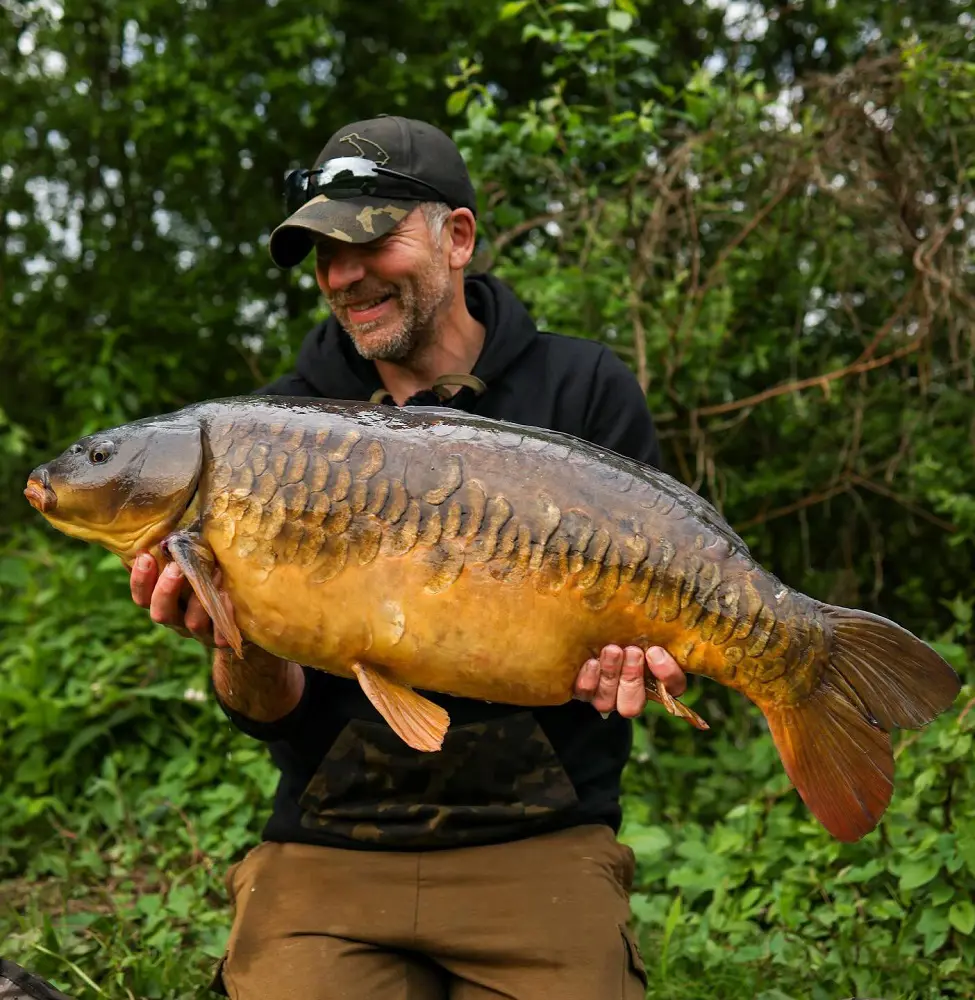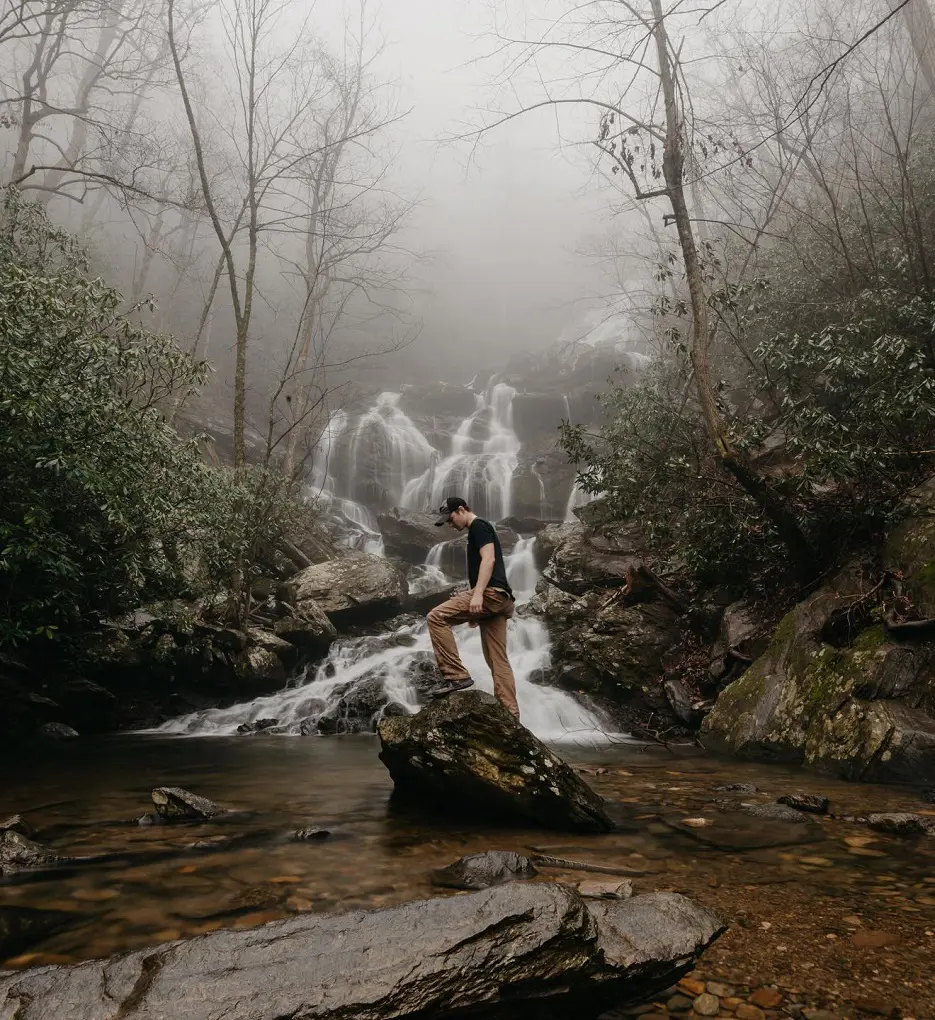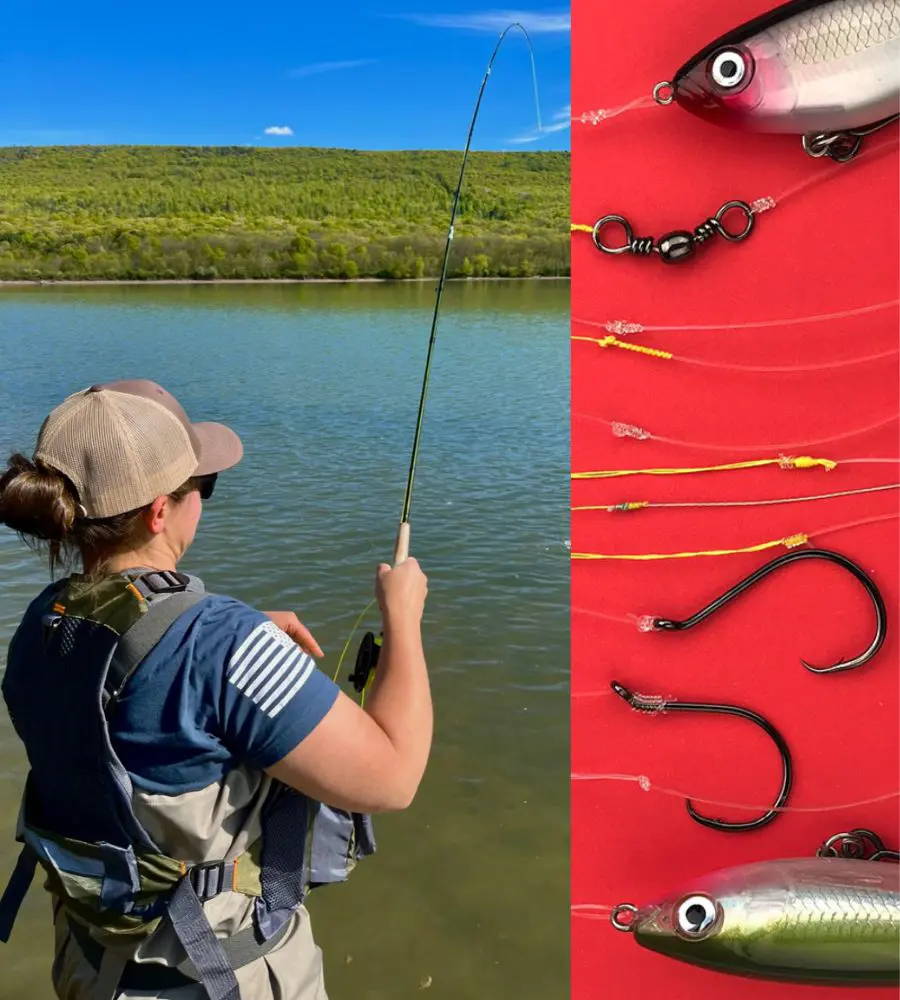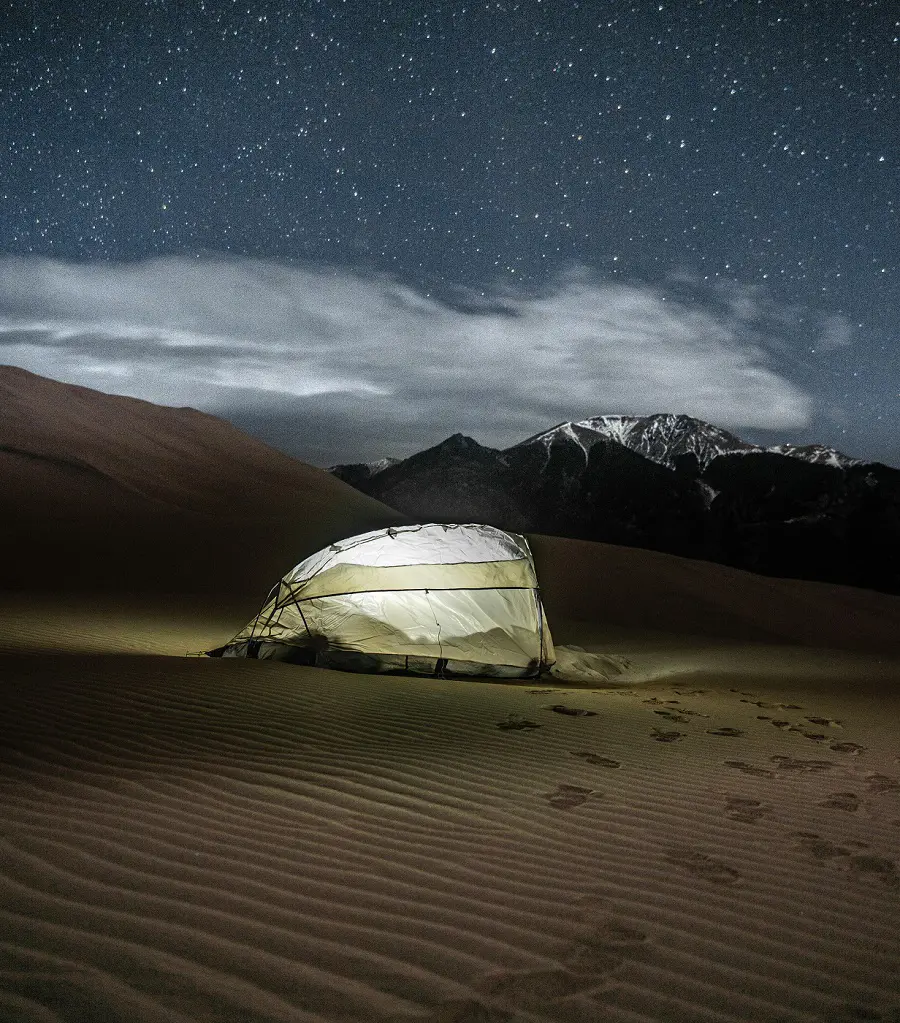Sturgeon fishing is a type of fishing that focuses on sturgeon, an ancient fish found in rivers, lakes, and coastal waterways worldwide. Because of their size, strength, and fighting abilities, catching or fishing for sturgeon may be both tough and equally rewarding.
Depending on the area and the kind of sturgeon being pursued, several tactics and strategies are employed for sturgeon fishing. Hence, this article will explain how to successfully catch Sturgeon fish, the equipment needed for it, and more.
Sturgeon Fishing
Since many sturgeon species are fragile or endangered, sturgeon fishing is strictly prohibited in many places. Catch-and-release regulations apply to sturgeon fishing in some places, which means that any fish that is captured must be returned to the water safely and uninjured. But, a certain amount of sturgeon can be stored for personal use in other locations.
For individuals who like fishing and recognize the special qualities of these species, sturgeon fishing may be an exciting and demanding sport overall. To maintain the sustainability of sturgeon populations, it is crucial to adhere to all municipal laws and ordinances.
It does not matter if you are a beginner or an experienced fisherman, what matters the most is the strategies to catch different fish as there are different ways to catch different species of fish, and catching Sturgeon fish is quite a challenging task because of their huge size.
Here are 9 tips and tricks to go Sturgeon Fishing:
1. Rods, Reels, and Fishing Line
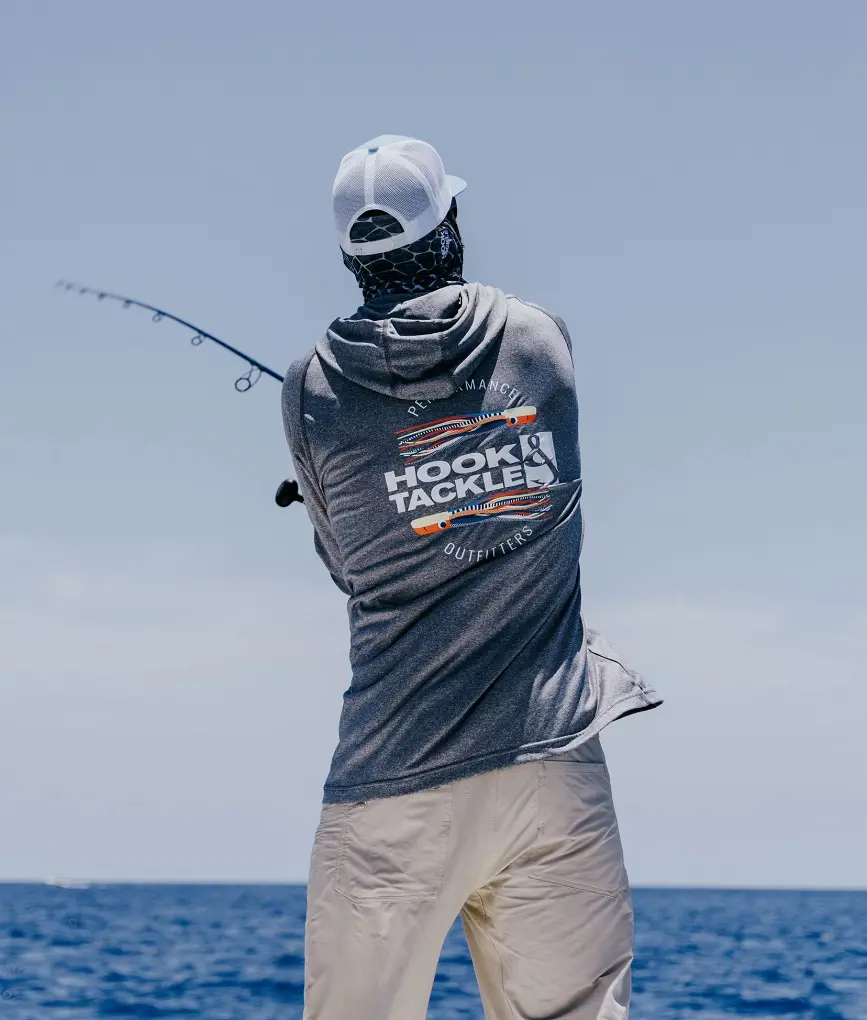
If you are with a guide, they are likely to supply all the equipment you want if you are fishing for sturgeon. Additionally, they will guarantee that the gear is appropriate for the local waterways.
A 7 to 8′ light or medium action rod and any mid-sized baitcasting reel will be a good option, and to ensure that there is an ample amount of line for the fish to escape with, some fishermen choose to use a bigger reel.
It is normal to use a braided line with an 18-inch mono leader and around 65 to 100 lb test for a large sturgeon. You may get away with using a shorter leader and lighter lines when targeting smaller species, like rock sturgeon, but many Midwest fishermen also carry strong equipment.
2. Bait for Sturgeon Fishing
Sturgeon chase by scent because their eyesight is not so good, if feasible, use fresh bait, and don't be afraid of a little stench. To make their bait more fragrant, some fishermen even marinade it or add a cotton ball drenched in scented oil.
Common sturgeon baits include salmon roe and lamprey (eel), especially at the beginning and conclusion of the fishing season. Select eggs from Chinook or other local salmon species. Seafoods that work well are sardines, shad, eulachon (smelt), or even bits of salmon. Mollusks, pile worms, crawfish, and several types of shrimp can also be used.
Seasonal variations in the tidbits that sturgeon look for means that you should also alter the type of bait you use. Make sure to select local species that are swimming in the same waterways as your target sturgeon, and be ready to try out a variety of baits.
Sinkers
Remember to include a sinker on your line so the bait stays in place and you might also need to switch out sinkers prior to landing on the right weight, depending on the depth and current. So, stock up on a variety of 4 to 26-ounce sinkers for your arsenal.
Likewise, you might also use hooks and ties in addition to this. Circle hooks are a common option; they are typically sized 4/0–6/0 for rock Sturgeon and 7/0–10/0 for white Sturgeon.
3. Best Time to Catch Sturgeon

Sturgeon may be found in a variety of bodies of water throughout the year, however some seasons are more productive and successful. Even separate places along the same river may have booms and busts.
White Sturgeon fishing is most effective throughout the warmer part of the year, with peak seasons from April to June and September to November. Anglers in the California Delta hunt these fish throughout the winter, primarily because nothing else is biting.
The California Delta has among the most lenient retention fishing restrictions, although they only apply to specified places and times of the year.
In British Columbia:
If you are fishing the Fraser River in British Columbia, expect to catch and release. For a fish you may keep, head to the Columbia River from Astoria, or else, in late May or June.
In the Midwest:
Some waterways see greater Sturgeon activity in the summer, while others in the Midwest thrive in the fall. Even in the winter, when the lakes ice over, you may go fishing for sturgeon. For a keeper fish, expect a brief, restricted season. Retention fishing for Sturgeon in Michigan's Black Lake is only permitted for a few days each year.
4. Hire a Guide
Sturgeon fishing, which offers the chance to catch these regal, ancient fish, frequently calls for certain expertise and gear. It is strongly advised that anybody who is not familiar with the nuances of sturgeon fishing hire a professional guide.
A competent sturgeon fishing guide is an excellent resource for finding great fishing spots, learning about the habits and behavior of sturgeon, and choosing the best tactics and equipment for a productive trip.
By hiring a guide, fishermen may take advantage of their local expertise and increase their chances of coming across and capturing these elusive species.
5. Know the Local Laws
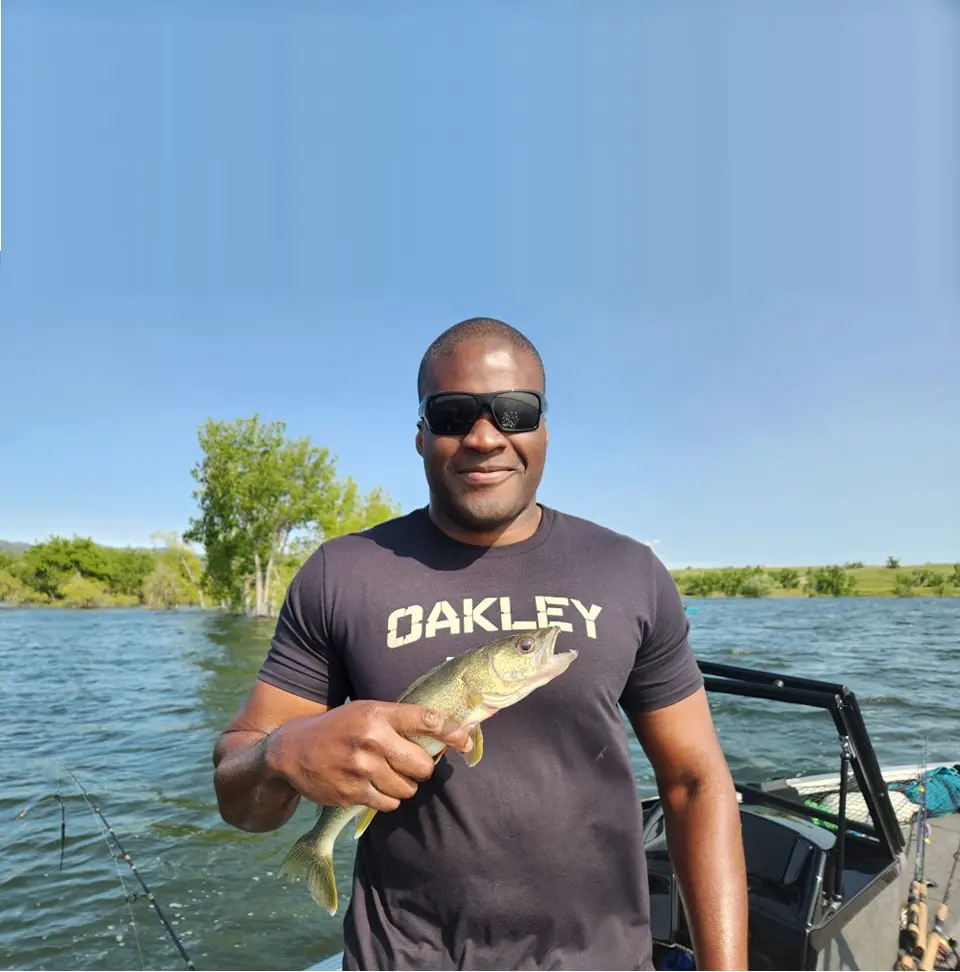
Although sturgeon are magnificent game fish, any that you capture in Hells Canyon must be released. In Idaho, catching and trying to keep an illegal fish is a misdemeanor. You run the risk of going to jail, paying a fine, or losing your fishing license for up to three years.
If you capture a sturgeon in a catch-and-release area, be sure to release it back to its aquatic habitat but you may take lots of pictures of it without harming them. Observing fishing regulations shows consideration for the environment and other user rights when using natural resources. It promotes harmony amongst boaters, fishermen, and other recreational users who use the same areas.
Hence, bring everything you'll need for a successful sturgeon fishing journey, and don't forget about local laws. To some extent, being aware of the local regulations will help you have a successful day on the river.
6. Move Around Regularly
Sturgeon fishing is not an easy task and is quite challenging, and a static approach is sometimes not so effective. Although, if you remain in the same place for a long period without any bites, it might be time to move. As these migratory species, sturgeon actively search for food and appropriate habitats.
Anglers run the danger of losing out on chances to catch these elusive species by staying still. As such, a dynamic approach is necessary, with the boat's location being periodically adjusted to explore new regions and maximize the likelihood of seeing sturgeon.
In addition to increasing the fisherman's odds of success, this proactive technique shows that the angler understands sturgeon behavior and how important it is to actively participate in the fishing experience.
7. Basic Fishing Gear
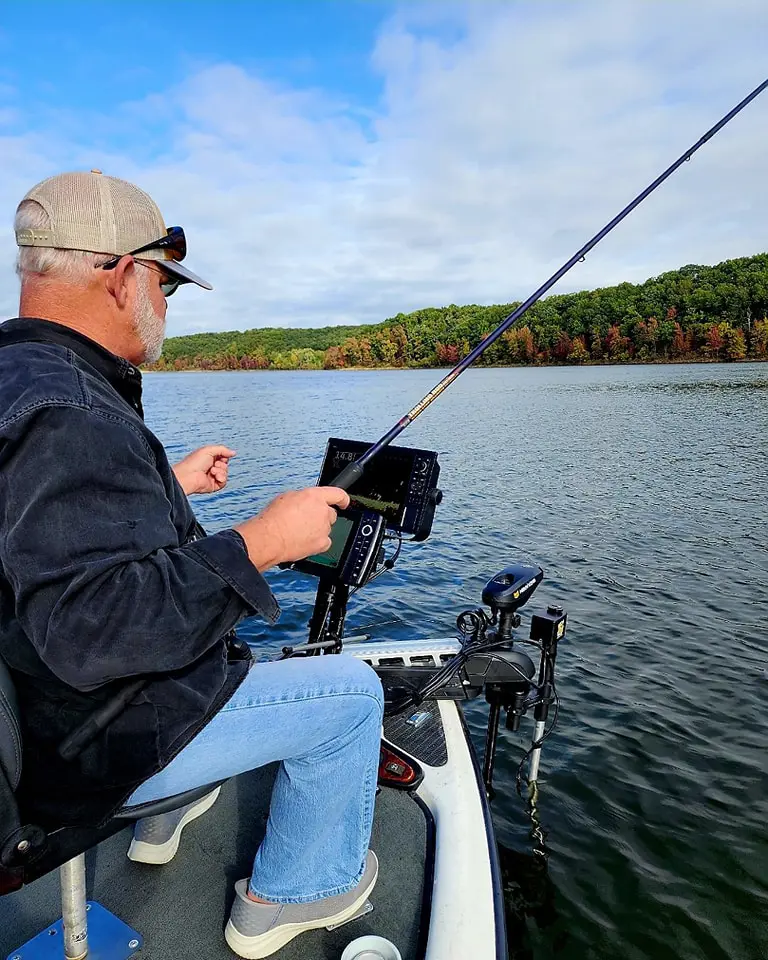
There are several essential gear for fishing, regardless of the kind of fish you wish to capture. These are the main components of your fishing gear, and because of the size and power of the sturgeon, they are particularly crucial while sturgeon fishing.
The following is a list of essential fishing equipment:
- Sturgeons require a heavy-duty fishing pole, so be sure it's strong enough to manage their weight. It is advised to use a medium-heavy to heavy rod.
- A dependable fishing reel Sturgeon fishing requires a high-capacity reel. Seek for one that has a minimum line capacity of 200 yards.
- It's important to use a strong fishing line. It is advised to use a braided line with a test strength of at least 80 pounds.
- Employ robust, large hooks. When fishing for sturgeon, round hooks are a common selection.
8. Best Places to Catch Sturgeons
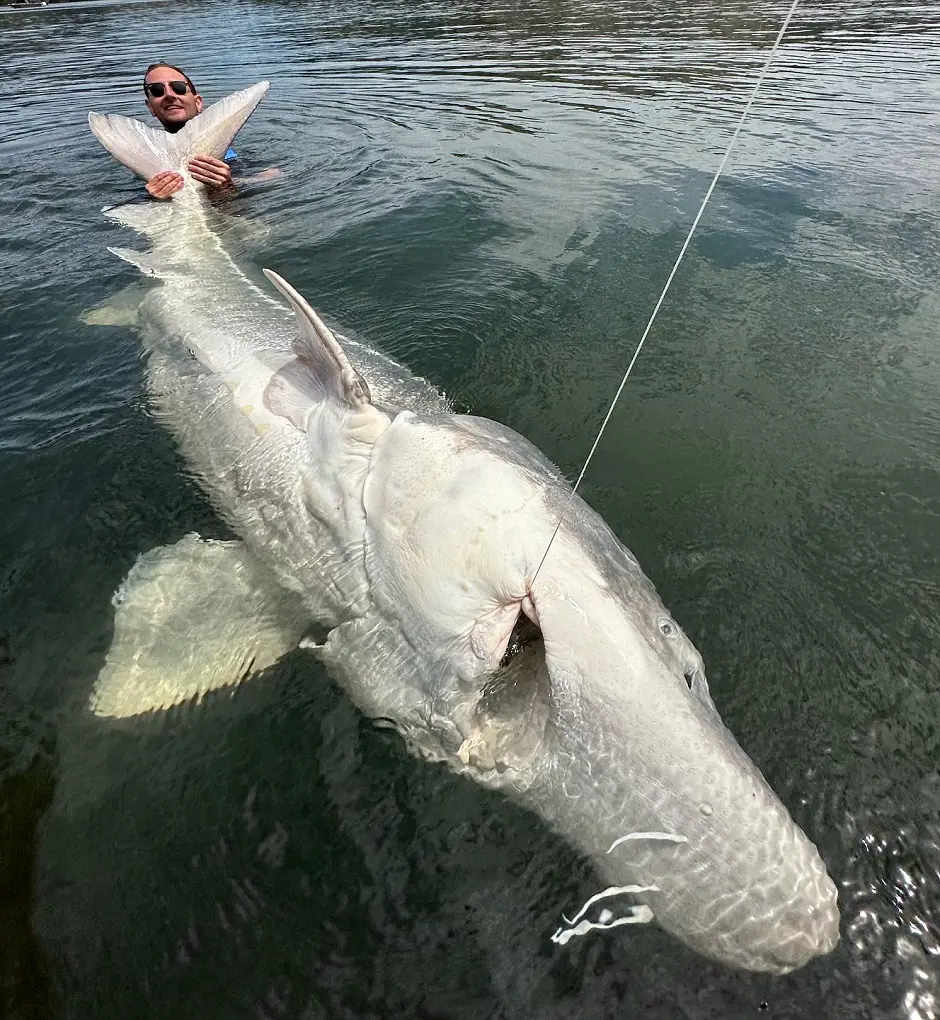
Freshwaters and salt waters are both suitable for sturgeons. From Florida to New Brunswick, the Atlantic is home to shortnose sturgeons living close off the eastern shore. Lake sturgeons may be found from the Gulf of Mexico to the Hudson Bay in Canada.
The Pacific Northwest Coast, extending from California to the Gulf of Alaska, as well as China, Korea, Japan, and Russia, is the preferred habitat for green sturgeons.
From the Gulf of Mexico to Florida and up north to Canada, one may find Atlantic sturgeons. From California to the Aleutian Islands, the Pacific coast is home to white sturgeons. Only the Mississippi and Missouri River basins are home to pale/shovelnose sturgeons.
Here is the list of habitats where sturgeon can be found:
- Backwater Fishing
- Bays
- Estuaries
- Channel Entrances
- Current Edges
- Dams and Falls
- Drop-offs
- Eddies
- Outside of Bends
- Ripples, Currents, Swirls and Sprays
- Rivers and Streams
- Rock and Boulder Pockets
- Small Pointed Waves
- Undercut Banks
9. Identify The Sturgeon
A sturgeon may grow to be more than 20 feet long and 200 pounds in weight. These fish have a lifespan of up to 100 years and these fish have five rows of strong scutes and are long and hefty. Over 3,000 pounds may be reached by a Beluga Sturgeon. The most common sturgeon is the American White Sturgeon, which may grow to enormous proportions at a third of that size.
Despite differences in size and color, all sturgeons have many essential traits in common. These consist of several barbels hanging over their lips and a long, flat nose. Also, sturgeons have rows of bone plates or scutes running down their sides and along their backs. Their heterocercal tail fins, which have a shorter lower lobe than an upper one, are another feature to observe.
A beginner may easily confuse this species for a catfish due to its whisker-like barbels, yet its duck-like snout strongly resembles that of its relative, the paddlefish. But once you come to know the Sturgeons, these gentle giants are unlike anyone you would ever meet. They are really distinct in both appearance and nature.
Types of Sturgeon
Seven of the estimated 25 to 30 species of Sturgeon around worldwide are found in North America. The most common ones in this region of the world are:
- White Sturgeon: They live in coastal areas and the rivers that connect British Columbia, Oregon, Washington, and California. They are undoubtedly the most well-liked sturgeon in North America due to their size. These magnificent fish measure more than ten feet in length and weigh more than a thousand pounds.
- Green Sturgeon: The most common species of sturgeon in North America is the green sturgeon, which is also a native of the West Coast and may be found in both fresh and saltwater from Alaska to California. They are considerably smaller, measuring around 3 to 5 feet in length.
- Lake Sturgeon: The largest and oldest freshwater fish, the lake sturgeon, is found mostly in the Great Lakes and their basins. While they may not grow to huge proportions as their western counterparts, many fishermen still consider Lake Sturgeon to be a fish of a lifetime, with a weight limit of 200 pounds.
Popular Techniques for Sturgeon Fishing
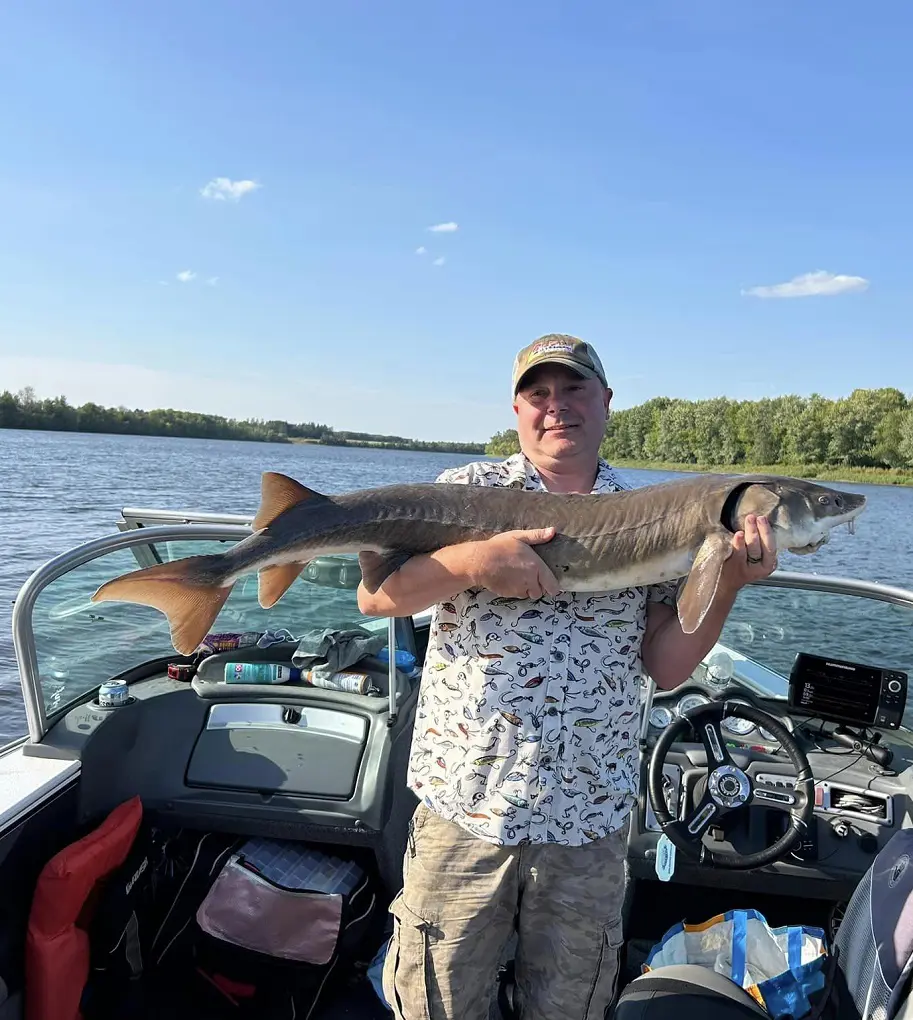
Sturgeon fishing tactics and methods vary depending on region and species. Some prominent strategies are:
- Bottom Fishing: Bottom fishing includes placing large weights and baited hooks on the river or lake bottom. Sturgeon are bottom feeders that are drawn to bait.
- Drift Fishing: Drift fishing is a method that includes drifting bait down the bottom of a river or lake with a boat or float. The bait moves with the tide, which attracts sturgeon.
- Fly Fishing: Fly fishing is a specialist method that involves imitating sturgeon's natural food sources using artificial flies. It involves a great deal of expertise and patience, but it can be extremely rewarding when done correctly.
Facts About Sturgeon
Some of the most fascinating facts about the Sturgeon fish are as follows:
Ancient Appearance
Since the time of the dinosaurs, the appearance of Sturgeons has remained unchanged. These massive, gray beasts have a mouth on their chin and spiky, colorful crests across the length of their spine. Because their mouths are on the undersides of their chins, you may frequently witness upside-down sturgeons searching for food in the water.
Oldest Fish
Sturgeon has survived on the earth for more than 200 million years, outliving dinosaurs. Depending on the species, sturgeons might take anywhere from 8 to 18 years to sexually mature and produce caviar. Sterlet fish matures in 8 years, Osetra in 10-12 years, and Beluga in 18 years.
They Have No Teeth
Sturgeon has no teeth, so you may easily feed them with your hands if you happen to visit one of the aqua farms across the world.

